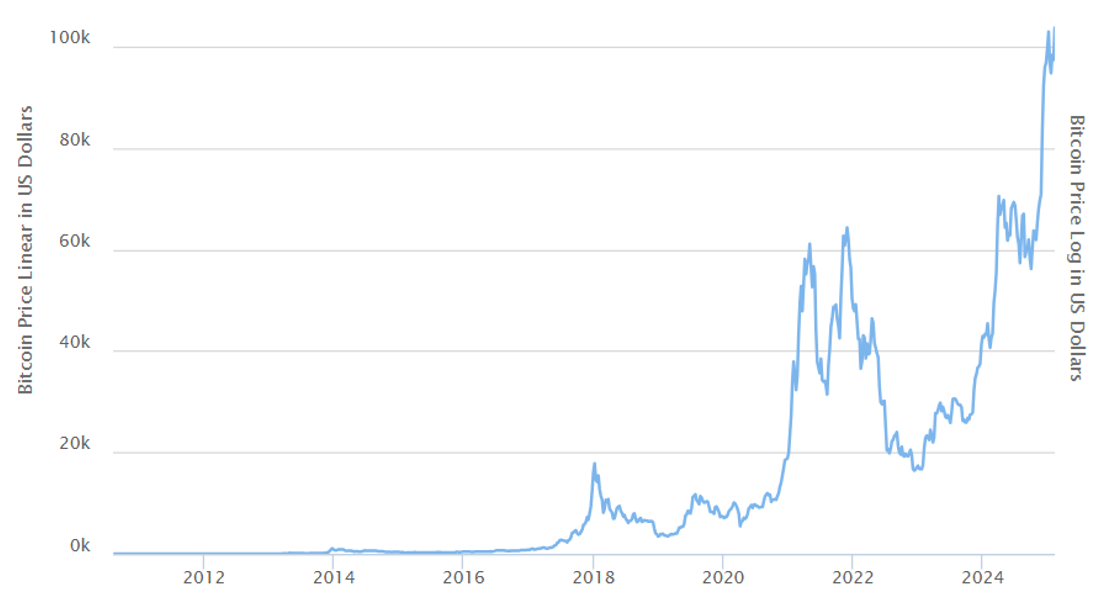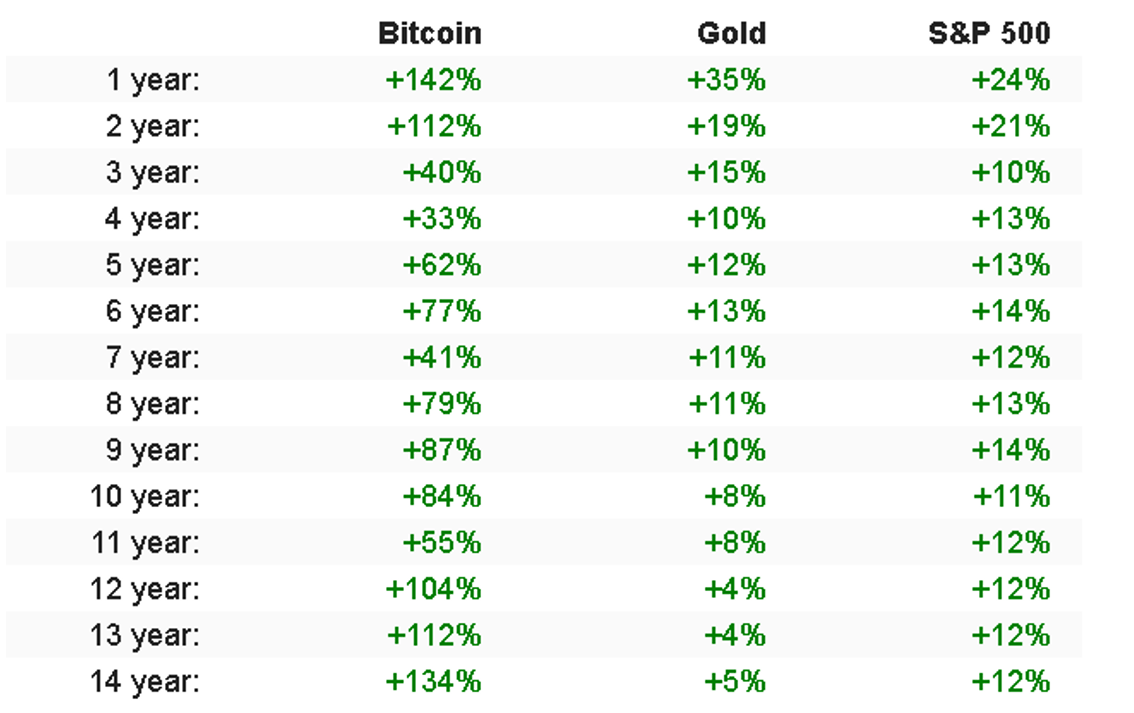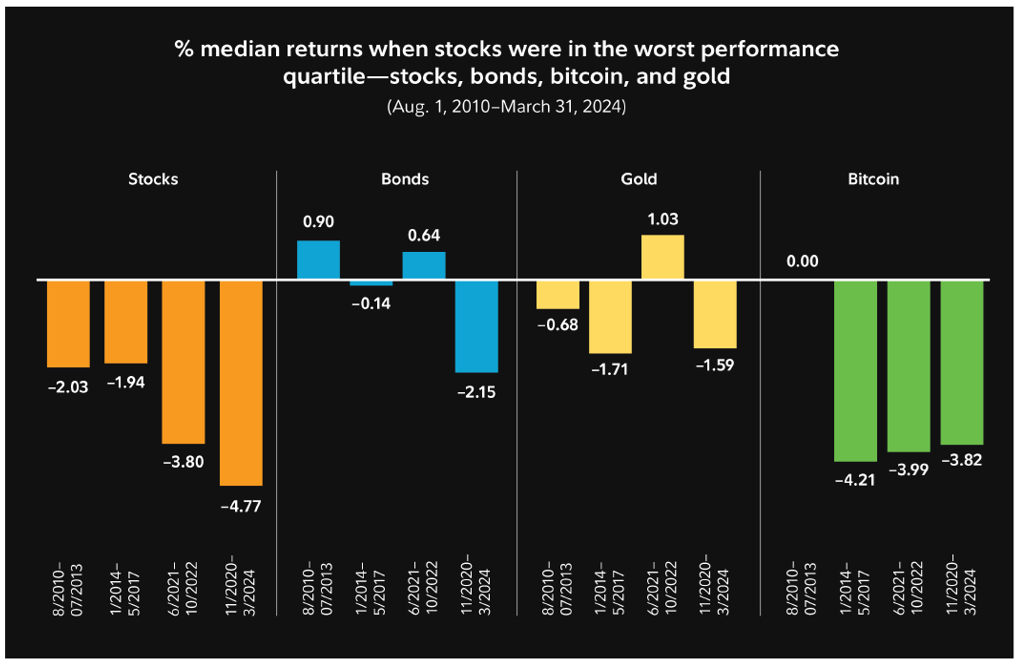Donald Trump boosts cryptocurrencies: should investors take heed?
Wind the clock back a few years and if you had asked investment professionals for their opinions on cryptocurrencies, you would likely have received a withering response. However, the passage of time has fostered some change, and outright rejection has given way to more nuanced thinking.
Mind you, many institutional investors, like us, have kept their distance from cryptocurrencies and remain in the ‘not now’, rather than ‘not ever’ camp.
Donald Trump’s return to the White House has buoyed crypto advocates and there are growing calls for acceptance. That said, his $Trump meme coin, released just prior to inauguration day, divided crypto supporters as some perceived it as opportunistic.
More substantively, President Trump has issued an executive order establishing a working group tasked with, amongst other things, evaluating the potential for a “national digital asset stockpile”, akin to America’s oil reserve, and proposing a regulatory framework for the issuance and operation of cryptocurrencies.
When referencing cryptocurrencies in this commentary, we mean bitcoin, the progenitor and best-known of all digital assets.
Cryptocurrency ETFs an important step towards legitimisation
Upon its emergence as the first decentralised cryptocurrency in 2009, knowledge of bitcoin was largely confined to techno-libertarians who viewed it as a way of breaking free of central banks and governments who, in their telling, debase fiat currencies with ‘money printing’ to finance unsustainable borrowing and spending, imperilling economic wellbeing.
There was little price movement in bitcoin’s formative years, but price action erupted in 2013 when it jumped around 10 times in value before declining by about 75% in mid-2015.
Discovery by many more participants, looking for speculative profits, from around 2018, has resulted in more frequent and dramatic price rises and falls (Chart 1).
Chart 1: Bitcoin’s price volatility has become more visibly extreme since 2018
Bitcoin prices (USD): 9 August 2010 – 10 February 2025

As at 10 February 2025. Source: (VIEW LINK)
The growing weight of retail investor interest proved to be telling and in January 2024 the United States Securities and Exchange Commission approved spot bitcoin exchange traded funds (ETFs), arguably the first significant legitimisation of bitcoin, potentially vastly increasing the universe of cryptocurrency investors.
Financial institutions like BlackRock, JP Morgan Chase, and Goldman Sachs now participate in cryptocurrency. Such companies’ embrace of bitcoin contributes to shifting the perception of cryptocurrency from a speculative asset to more mainstream financial instrument.
Even so, blindly following others is not a convincing argument for adding bitcoin to investment portfolios. We strongly believe that we need to come to our own conclusions by leaning on our research and analysis. In that spirit, what follows are summaries of the pro and anti-cases for bitcoin, as we see them.
The case for bitcoin: does a strong past mean a strong future?
For starters, there is bitcoin’s strong growth potential. Over all time periods shown in chart 2, bitcoin’s Compound Annual Growth Rate (CAGR) has been remarkable versus gold, and US equities (as measured by the S&P 500 index).
It can be easy to be drawn in by such past performance and so a word of warning is in order; a report noted that Bitcoin has “outperformed all major asset classes in 7 out of the last 10 years”, while simultaneously also “being the worst performer in three of these 10 years.”
Moreover, the future is rarely a straight-line extension of the recent past and so it is possible that bitcoin’s days of exceptional, albeit very volatile performance, may be in the rear-view mirror.
Chart 2: Bitcoin’s past performance against gold, and US shares (S&P 500)
Compound Annual Growth Rate (CAGR) for periods to 13 January 2025

As at 13 January 2025. Source: The Bitcoin Library
Fixed supply
Investors may also be drawn to bitcoin because its supply is not a function of demand. A maximum of 21 million bitcoins can be minted (or ‘mined’) with this limit hard-coded into the bitcoin protocol.
Currently, around 19 million bitcoins are in circulation and the process for releasing the remaining coins is an algorithmically administered process automatically executed via code and recorded on a distributed ledger.
Even as available supply shrinks as it nears the 21 million ceiling, there is no possibility of debasement as there is no centralised intermediary, like central banks, able to influence bitcoin supply.
Bitcoin’s finite nature, and in-built scarcity would seem to buttress its claims as a store of value, a kind of digitised gold that, like the precious metal, can play a role as a protector against inflation.
Note, however, that no such supply restrictions are in place for numerous other cryptocurrencies.
The case against bitcoin: severe volatility and rising correlations
Contrastingly, extreme performance swings count against bitcoin with drawdowns of more than 50% being a regular feature of bitcoin’s performance over the past decade.
Moreover, analysis reveals that in just over the past three years, bitcoin has been nearly four times more volatile than the US sharemarket.
Everyone loves upside volatility, but how about the performance craters associated with bitcoin?
In 2022, for instance, the MarketVector Bitcoin Index dropped about 65% for the year and that was far from a one-off as bitcoin has suffered other thumping drawdowns over the past decade and more (Chart 3).
Chart 3: Some thumping bitcoin drawdowns

Data as at 30 April 2024. Returns for periods greater than one year are annualised. #The MarketVector Bitcoin Index measures the performance of a digital assets portfolio which invests in Bitcoin. ^The Morningstar US Market Index is a rule-based, float-weighted index that tracks the performance of the US stock market. The index targets 97% of the market capitalisation of the US stock market. Source: Morningstar Direct
Previously, bitcoin advocates could at least argue that the cryptocurrency represented a source of portfolio diversification as it exhibited low correlation with major asset classes.
To that end, they could have cited findings such as the one revealing that over the past 10 years, bitcoin (and other major cryptocurrencies) had a correlation of less than 0.3 when measured against shares, bonds, real estate, gold, commodities, and other asset types.
However, as cryptocurrency participation has broadened, bitcoin’s correlations with shares have trended up during times of capital markets turbulence (Chart 4), which undermines diversification claims.
Over the 13-year period shown in chart 4, when the US sharemarket (represented by the S&P 500 index) performed worst, bonds, and gold posted better median returns than bitcoin.
By the same token, bitcoin meaningfully outperformed in months where US shares delivered top-quartile performance. Using the same methodology and looking only at months when shares performed best, bitcoin tended to outperform shares, bonds, and gold.
In short, the analysis suggests that “bitcoin tends to follow the big-picture direction of the US share market, but with greater magnitude.” When shares perform poorly, bitcoin’s price has typically fallen even harder. When the share market is strong, its price has historically outperformed.
Chart 4: Bitcoin has tended to fall further than shares during times of market turbulence
% median returns when shares were in the worst performance quartile — shares, bonds, bitcoin, and gold

Shares represented by the S&P 500; bonds represented by the Bloomberg U.S. Aggregate Bond Index; gold represented by London Bullion Market Association (LBMA) Gold Price PM USD. Monthly data from Bloomberg Finance LP. Source: Fidelity Investments, Morningstar, Bloomberg Finance LP. Full time period is August 1, 2010–March 31, 2024. The four respective time periods used are: August 1, 2010–December 31, 2013; January 1, 2014–May 31, 2017;June 1, 2017–October 31, 2020; and November 1, 2020–March 31. 2024.
Source: How bitcoin may impact your portfolio. Evaluating bitcoin’s potential benefits and risks. Fidelity Viewpoints
Not yet a medium of exchange
Notwithstanding steps towards bitcoin becoming more mainstream, it still falls short of one of the definitions of a currency — it is not yet a widely accepted medium of exchange.
To be clear, it arguably does meet two other definitions of a currency — bitcoin is a store of value, and unit of account. However, ticking two out of three boxes still leaves bitcoin short of indisputably being a currency, in our view.
Bitcoin’s volatility, transaction fees, and limited acceptance as a medium of exchange restricts its utility as a currency and so it continues, we believe, to present as a speculative investment for value appreciation. Ireland’s central bank, for instance, likens crypto investment to lottery playing and stresses that only expendable funds should be risked.
Furthermore, there are uncertainties and complications stemming from the evolving digital assets landscape. Different jurisdictions may approach regulations differently, which can create legal uncertainties that impact contracts and transactions involving cryptocurrencies, including bitcoin.
Impossible to value by conventional means
For investment professionals, being able to value assets by metrics such as future cash flows, dividend yields, yield-to-cash flow, and more, are non-negotiables.
However, bitcoin is impossible to value by any orthodox standard. It produces no cash flows, and its value is simply determined by what someone is willing to pay for it, on the expectation of the price rising in future. Said differently, bitcoin remains a poster child of speculation.
The not-so-great history of private money
Bitcoin is not the first attempt at creating private money. Afterall, there are around 10,000 cryptocurrencies today and the United States flirted with a system of private money in the Free Banking Era from 1837 to 1863 during which hundreds of private entities went about issuing their own private bank notes.
The reserves of these ‘banks’ were not always verifiable and thus were subject to runs on the bank in which customers could not access their funds. The passing of the 1863 National Bank Act ended the experiment.
On balance, we continue to lean towards the ‘not now’ to bitcoin camp when considering if bitcoin warrants a place in our diversified portfolios. We continue to keep a close eye and an open mind, and actively monitor the cryptocurrency ecosystem including regulators’ attitudes.
Investments in technology leaders feature in our portfolios
Beyond our bitcoin caution, the diversified portfolios we manage for our clients generally feature investments in businesses at the forefront of technological innovation, such as NVIDIA, Microsoft, Apple, Taiwan Semiconductor, Amazon, and Alphabet (Google’s parent company).
In the private markets space, our portfolios also generally include infrastructure investments benefiting from the economic digitisation trend through exposures to fibre networks and telecommunications towers.
We believe data demand will continue to increase driven by cloud computing, and the Internet of Things (The Internet of Things (IoT) describes the network of physical objects — “things” — that are embedded with sensors, software, and other technologies for the purpose of connecting and exchanging data with other devices and systems over the internet).
Given the pace of activity and competition in the technology arena and claims and counterclaims on who is ahead and who is behind (think of the kerfuffle created by Chinese startup DeepSeek’s AI assistant), periods of market volatility can be expected.
Today’s leaders may not be tomorrow’s and that’s why diversifying across multiple companies in both the public and private market realms makes sense.
Learn more
MLC Asset Management applies its knowledge and experience, with the aim of delivering the best possible investment results for institutional and retail clients in Australia and globally. For more information, please visit our website.
2 topics

